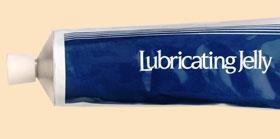Exciting areas of polymer chemistry have exploded within the last decade
One of the most - ahem - exciting areas of polymer chemistry has exploded within the last decade, and that trend is set to continue, chemists at the ACS Fall meeting in Boston heard on 20 August.
’Personal lubricants are a great example of how polymer chemistry can address even the most intimate needs of the consumer,’ said Michael J. Fevola, principal scientist with Johnson & Johnson, Skillman, New Jersey, US, during a special symposium on the ’Polymer science of everyday things’. ’The intimacy enhancement category as we know it today did not exist in the mass market prior to the 1990s, with most growth having occurred within the past five years.’

Personal lubricants have been transformed from greasy gels, usually associated with medical procedures, into a naughty-but-nice product category with US sales topping $150 million in the US alone.
This growth is a triumph of marketing, but it is also a triumph of polymer science. Liquid lubricants such as K-Y contain high molecular weight water-soluble polymers such as hydroxyethyl cellulose. They are less greasy than the original medical product, easier to apply, and are compatible with condoms (early petroleum-derived lubricants could plasticise latex, leading to holes and tears).
Products containing ionic polymers such as carboxymethylcellulose or polyacrylic acid can be buffered for use in low pH environments such as the vagina. And varying chemical groups and molecular weight can tweak the viscosity and slippiness of the product.
’The large hydrodynamic volume of these polymers means that you can achieve semi-dilute conditions at fairly low concentrations,’ said Fevola. Personal lubricants are often 50-70 per cent water, with other solvents such as glycerin and sobritol. Colours, fragrances and flavors are added, and ’sensates’ such as menthyl lactate can be included to provide a tingling sensation. The concentration of polymer itself can be as low as 0.3 per cent.
The market for personal lubricants in expected to continue growing, driven in part by the ageing of the baby-boomer generation, but also by creative marketing and innovative chemistry. Recent anhydrous products have added a new sensation: the exothermic hydration of the polymer as it interacts with water from the skin and the environment leads to a warming feeling. And new silicone-based products provide exceptional lubrication, due to their low surface energy. ’They are long lasting, and can be used in wet environments such as the bath or shower,’ explained Fevola. ’But, be careful,’ he warned. ’The tub can become very slippery.’
Fiona Case






No comments yet